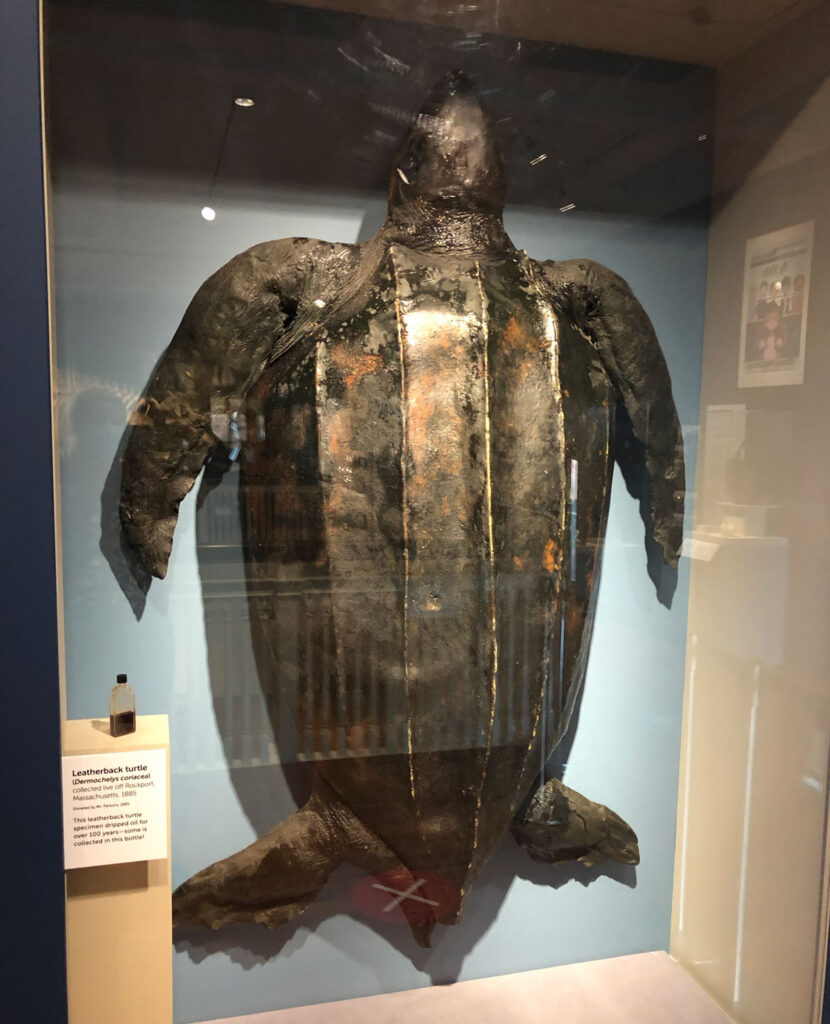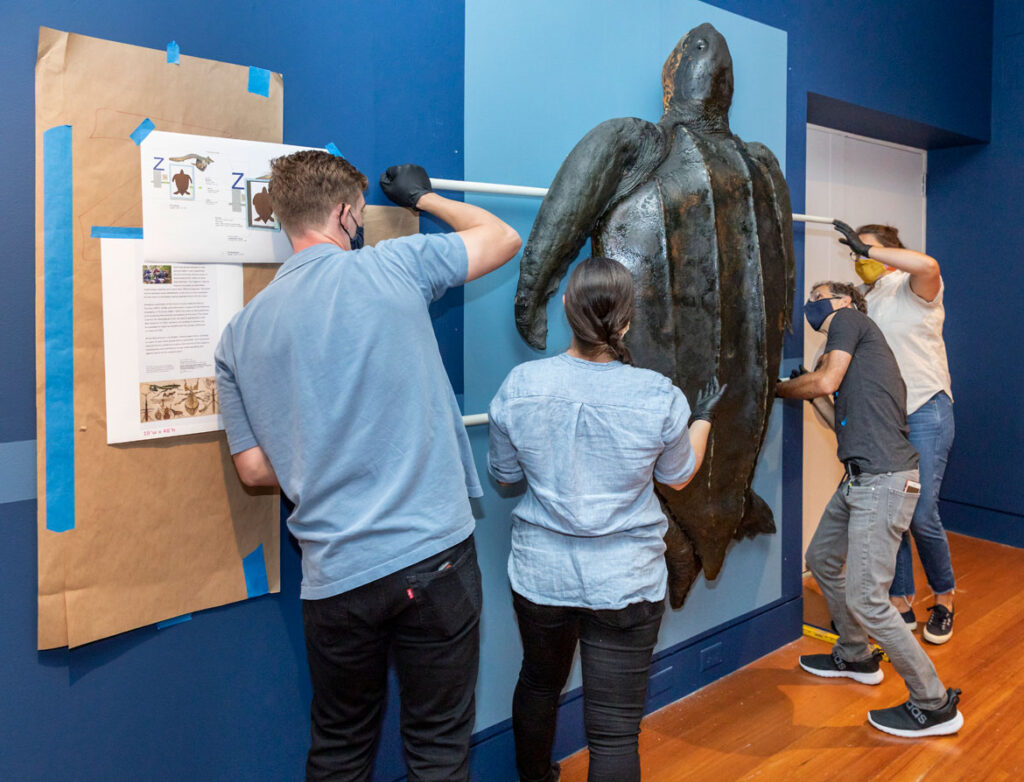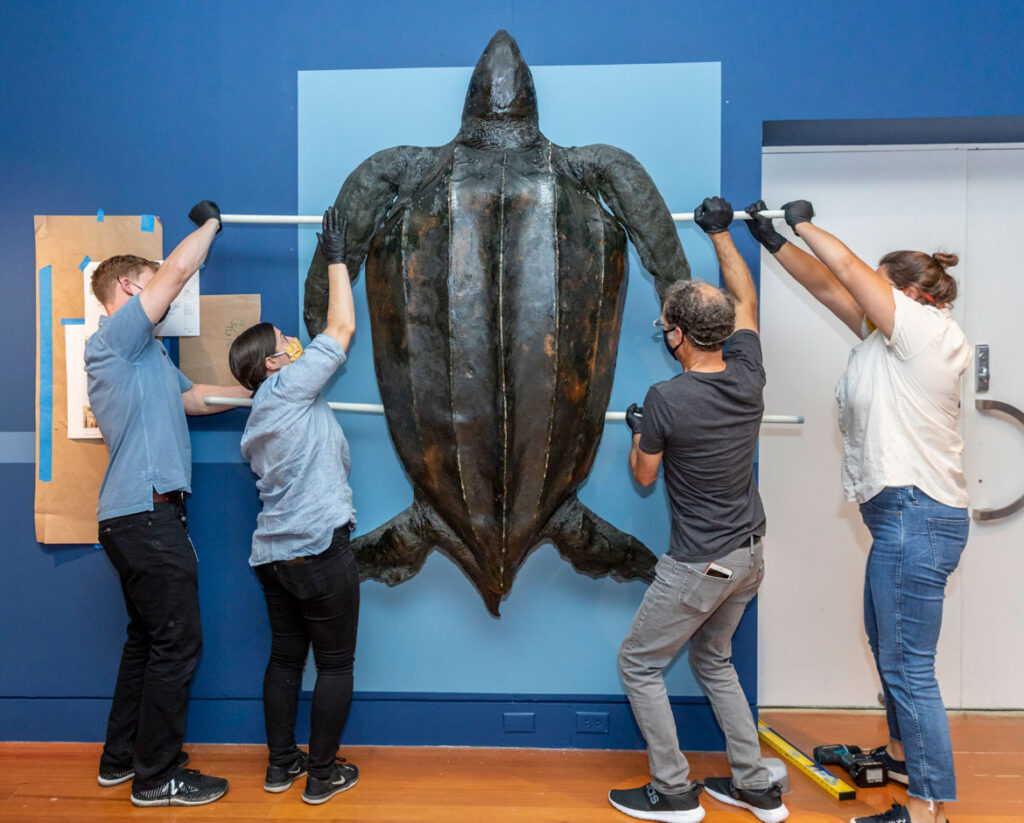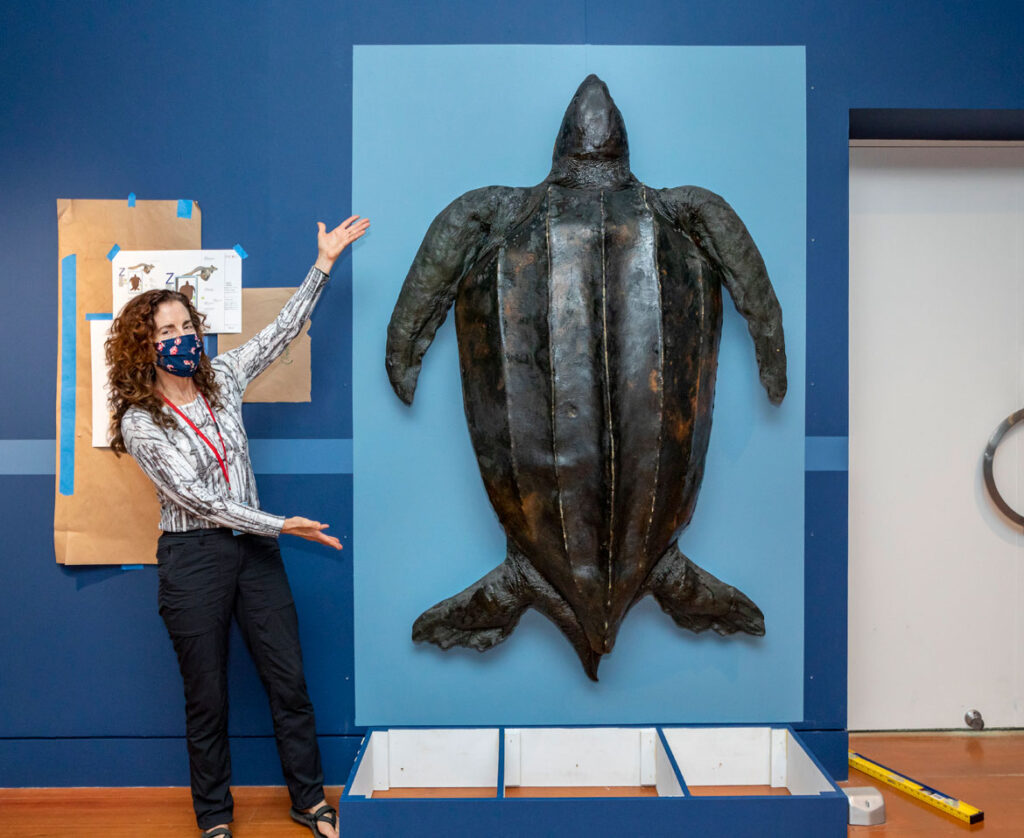For decades, the old leatherback turtle lurked large and curious in a dim corner of the Peabody Essex Museum’s natural history galleries, displayed in one of the few places the sizable beast would fit.
A Mr. Parsons “caught it off Rockport live and then gave it to the museum” in 1885, explains Janey Winchell, director of the museum’s Art & Nature Center. “It was 750 pounds. They get up to 1,500 pounds. It was 76 inches long when they brought it in. So a good-sized turtle.”
It went on view at the Salem museum shortly thereafter “and stayed on view until we took it down” in 2002 as part of “reimagining the natural history galleries.” Which became the Art & Nature Center that debuted with the museum’s 2003 expansion. Now, after nearly two decades in storage, the leatherback turtle is back on view in the exhibition “Salem Stories” at the museum from Sept. 26, 2020, to Oct. 3, 2021.
“We had a lot of requests for the leatherback turtle. People missed it,” Winchell says. “The story of it dripping oil added to the romantic quality of the object, the specimen.” Dripping oil? We’ll get to that in a moment.
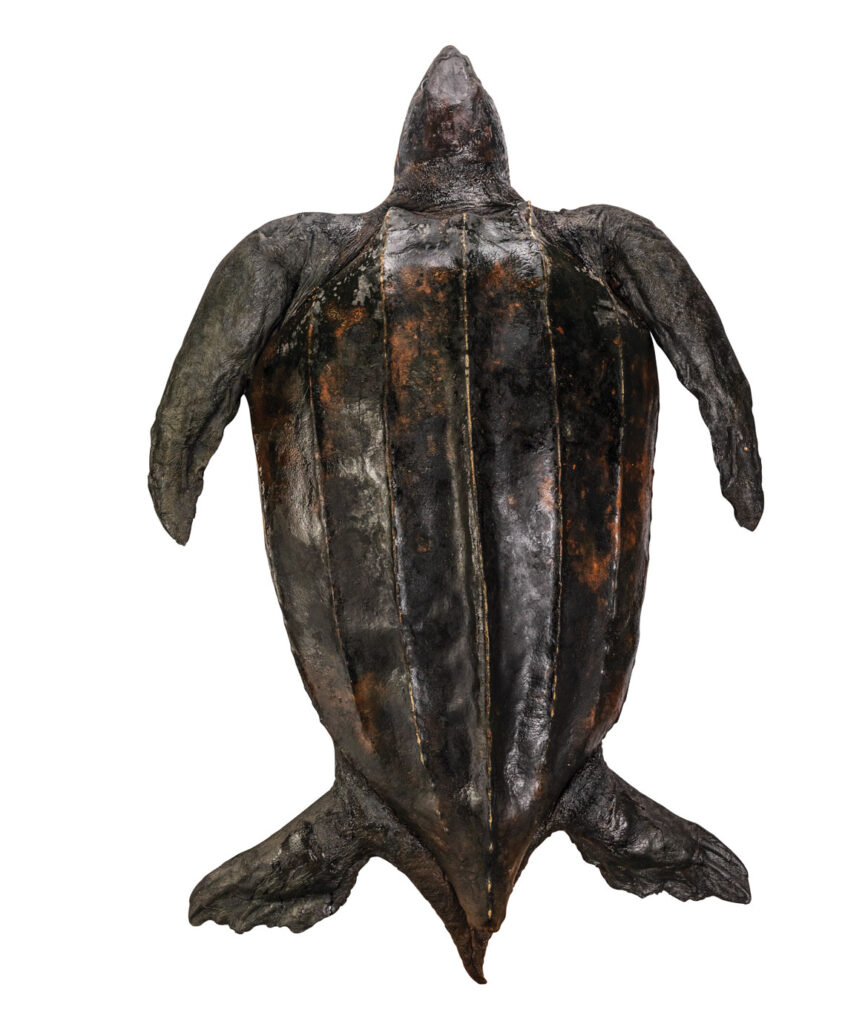
The turtle is one of the highlights of a natural history collection devoted to documenting the wildlife of Essex County along Boston’s north shore. Winchell says, “The value of the collection is indisputable, especially as a record of what has lived in the region, the diversity, before climate change. These document the time of flowers and species of insects that either don’t occur now or are very rare when they were common.”
The leatherback turtle “has been this beloved object and I think part of that is because it was on view for all those generations of visitors,” Winchell says. But it wasn’t just that so many people had seen the leatherback turtle over the years, it was the turtle’s majestic weirdness. Leatherback turtles are considered the largest sea turtle—for comparison, this one arrived half-again heavier than Myrtle, the 90-year-old, 500-pound green sea turtle that is the star of the New England Aquarium’s Giant Ocean Tank in Boston. The Peabody Essex’s specimen measured more than 6 feet tall.
“It has this shiny surface and doesn’t look like what you’d think of as a sea turtle because it doesn’t have a visible shell,” Winchell says. And, memorably, “for quite a long time it had a reputation for dripping oil.”
“The oil is not something we applied to the object. This is how they survived in the cold weather. They have a sort of blubber layer … to thermoregulate in colder ocean waters,” Winchell says. “It’s unique among sea turtles in being able to maintain a warm body temperature. … They can migrate into the North Atlantic where other turtles can’t survive. They’ve been found off Newfoundland.”
“The case was specifically designed for the turtle so the oil could be collected discretely underneath,” Winchell says. The oil would naturally channel down to the turtle’s tail, then drip into a hole in the case into a metal container hidden below, she says.
“It dripped oil for over 100 years, certainly,” Winchell says.
“It’s not still dripping oil,” Winchell notes. Because the museum is keeping the carcass cooler now. “It was only in the summer when it wasn’t climate controlled,” she says. “It would get over 80 degrees and when it started to get over 80 degrees it would start to drip.” The effect was so predictable, she says, that “I could measure the temperature by if it was dripping oil.”
But if you’re intrigued by the tale, keep an eye out for a little bottle next to the giant turtle. Inside is some of the collected oil.
If this is the kind of coverage of arts, cultures and activisms you appreciate, please support Wonderland by contributing to Wonderland on Patreon. And sign up for our free, (hopefully) weekly newsletter so that you don’t miss any of our reporting. (All content ©Greg Cook 2020 or the respective creators.)
